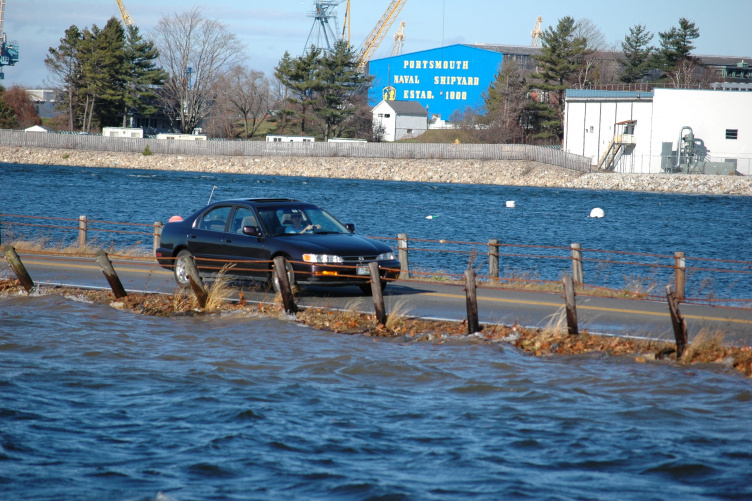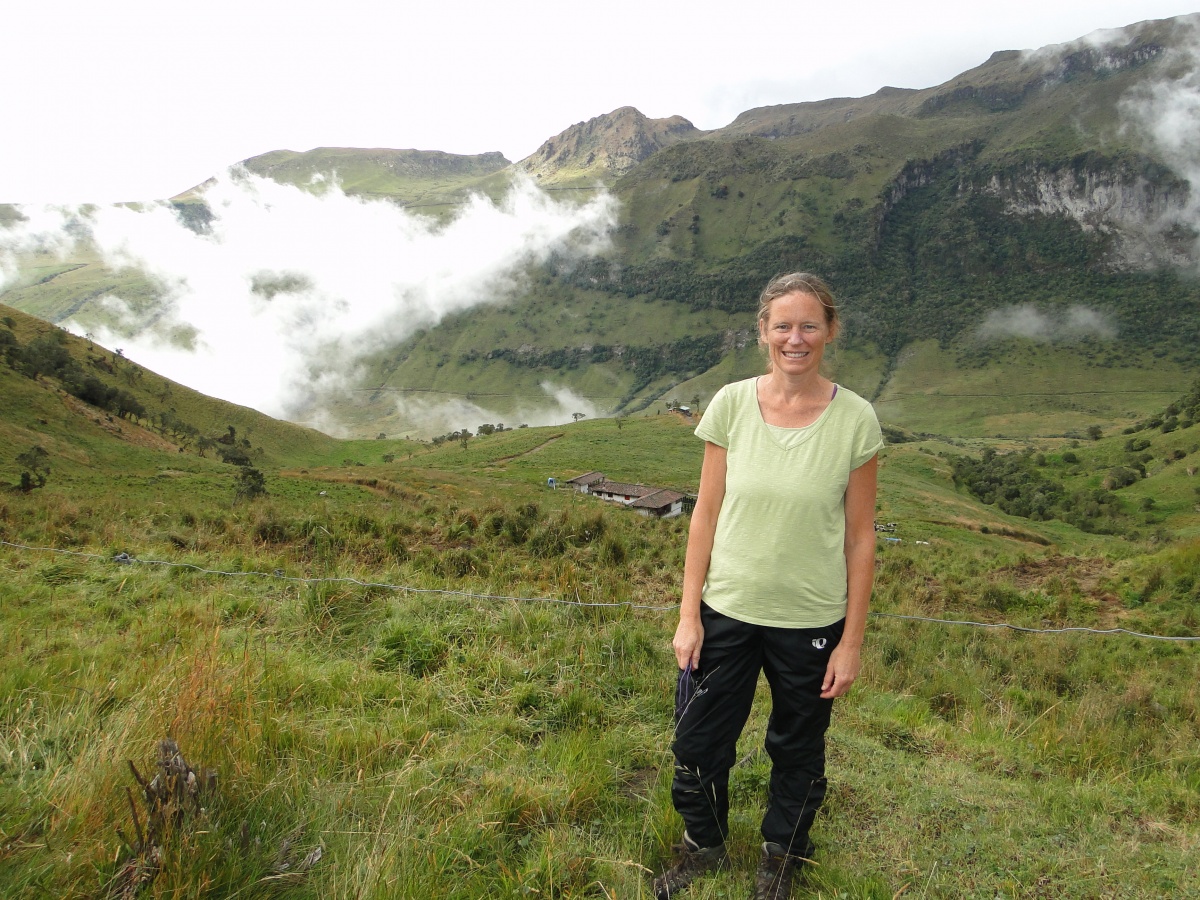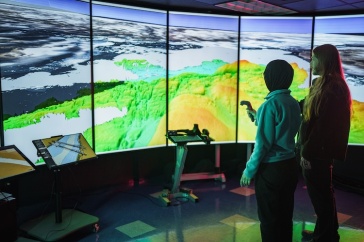
As our climate changes, our food and forests, our transportation, even our health will become vulnerable. From pines to pavement, weeds to wheezing, UNH researchers are working on solutions to help us adapt to a warming planet.
“We spend billions and billions of dollars on transportation infrastructure every year, and we’re doing it without thinking about what the future holds. That means there’s a good chance we’re not efficiently investing the resource,” says Jennifer Jacobs. In 2012, Jacobs and Jo Daniel, both professors of civil and environmental engineering, launched the National Science Foundation-funded Infrastructure & Climate Network, or ICNet, to bring the scientific findings around climate change to bear on our roads and bridges.
From pines to pavement, weeds to wheezing, UNH researchers are working on solutions to help us adapt to a warming planet.
Water — from the clouds and from the sea as it rises — is a primary threat to the integrity of our roads and bridges. But new ICNet research, conducted in part by Ph.D. student Jayne Knott in collaboration with N.H. Sea Grant, is modeling the effect of rising groundwater in New Hampshire’s seacoast on this critical infrastructure.
The team has found that our geology complicates the picture, so flooding due to rising seas will likely occur much further inland than previously thought. To wit: Daniel says even the Portsmouth traffic circle, a critical interchange some two miles inland, is in danger of going under water in the future. “Our goal is to figure out what roads might be vulnerable, then work on different adaptations on those roads,” she says.
Daniel, who researches the asphalt concrete that surfaces most of our roads, is also evaluating how recycled asphalt pavement will withstand the rising temperatures and extreme precipitation of changing climate. And in a project for the Federal Highway Administration, she’s helping develop guidelines that will help decision-makers determine when flooded roadways can be reopened to traffic.

Heidi Asbjornsen is interested in the other side of the extreme precipitation coin — drought — and its impact on forests. In New England, says the associate professor of ecosystem ecology, “even though we’re expected to have more total rainfall, we’re also expected to have more prolonged periods of drought.”
Asbjornsen has simulated drought conditions on a plot at UNH’s Thompson Farm with a grid of gutters that channel away 50 percent of the rain that falls beneath the forest’s tree canopy.
Working alongside Ph.D. student Cameron McIntire with funding from the New Hampshire Agricultural Experiment Station (NHAES), Asbjornsen will see which species respond well to drought, which will suffer, and how the forest may change.

“If there is a lot of die-off of vegetation, we could see more flooding and a loss of sediment and nutrients. It may also be difficult for new plant species to establish, especially if these changes happen suddenly,” says Asbjornsen, who is jointly appointed to UNH’s department of natural resources and the environment and the Institute for the Study of Earth, Oceans, and Space and studies similar impacts of climate change on cloud forests in Mexico and rain forests in the Brazilian Amazon.
It’s easy to imagine New England farmers embracing a warming climate that could extend their growing season. But the unpredictable and extreme precipitation that climate change brings tempers that enthusiasm, says Becky Sideman, crop specialist with UNH’s Cooperative Extension and NHAES.
“I see farmers really thrown for a loop by these extreme precipitation events: long stretches of drought, or excessive rainfall events,” she says, particularly in the spring planting and fall harvest seasons. “Every time one of these extreme events happens, farmers are wondering ‘how can I protect myself against future events like this?’”
Sideman’s colleague Richard Smith notes that any boost a few degrees of warmth would give to tomato or even sweet potato crops will also give a leg up to farmers’ nemesis: weeds. As the growing season becomes longer, “weeds will potentially grow bigger and produce more seeds, which means more weeds in general,” says Smith, assistant professor of agroecology. Organic farmers, who have fewer tools to battle weeds, are particularly vulnerable.
In a study funded by the agricultural experiment stations at UNH and the universities of Vermont and Maine, Smith and his colleagues surveyed weeds on 77 organic vegetable farms across the three states to determine how weeds will adapt to a changing climate. They found that changes in climate are indeed linked to changes in weed populations; in particular, maximum annual temperature and the highest low temperature in the winter were stronger determinants on weed communities than soil characteristics.

Now, professor of plant biology Tom Davis is doing genetic analyses on some of those weeds to help predict which of the 113 species Smith identified will adapt best and proliferate in a changing climate. “We’ll give farmers a heads up in terms of what they need to be thinking about regarding managing these weeds,” says Smith.
But it’s not just roads, trees and crops that will suffer climate change’s wrath: Our health will, too. As the temperature rises, so do rates of respiratory and heart diseases and illnesses transported by water or ticks. And “we’re just starting to talk about the mental health aspects of having a flood or a natural disaster tear your whole world apart,” says Semra Aytur, associate professor of heath management and policy.
Aytur co-authored a report on health perspectives of New Hampshire’s changing climate for Climate Solutions New England, a project of UNH’s Sustainability Institute. With other UNH faculty, she also assisted the town of Exeter, N.H., on a climate adaptation project led by professor of engineering Paul Kirshen. Climate change will exacerbate the riverside town’s current challenges with flooding, pollution, stormwater drainage and salt marsh protection, they found.
Because of the vast complexity of how a changing climate will change our lives, Aytur says collaborations between health scientists like herself and engineers and climate scientists are the path forward, an approach embraced by up-and-coming researchers.
“I’m having more engineers, students from natural resources and public health collaborating in my classes,” she says. “It has to be such a transdisciplinary kind of approach. Nobody has the answers alone.”
-
Written By:
Beth Potier | UNH Marketing | beth.potier@unh.edu | 2-1566


















































